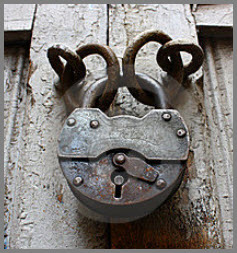Once a pay period has closed, the payroll process begins. Basically, the payroll process incorporates preparing the time collected in Kronos Workforce Timekeeper, Kronos' payroll software, reviewing and validating that data, then sending it over to your payroll system. Your payroll system then processes the data and does many things, the most important of which is to provide pay checks or direct deposits to employees.
The payroll process is an excellent topic that will be covered at another time. The purpose of this entry is to discuss the importance of the Sign Off feature in Workforce Timekeeper.
What is a sign off and what does it really do?
The Sign Off is a lock that functionally closes pay period data to further edits. You probably know how this works. Managers, supervisors and in some instances, employees review their own time and/or the time of the employees they manage. Managers and supervisors edit their employees' time to ensure correctness. This generally means correcting missed punches, unexcused absences and applying comments and notes for exception punches. Once this is done, the employee (hence the backward nature of the employee approval) then the supervisor or manager (and in some cases, both) approve the timecard. That approval tells the payroll analyst, and everyone who can view that timecard, that it is good to go, or in other words, ready for processing. There are a lot of specifics I am not talking about here, but they are referenced elsewhere for your information.
You probably know how this works. Managers, supervisors and in some instances, employees review their own time and/or the time of the employees they manage. Managers and supervisors edit their employees' time to ensure correctness. This generally means correcting missed punches, unexcused absences and applying comments and notes for exception punches. Once this is done, the employee (hence the backward nature of the employee approval) then the supervisor or manager (and in some cases, both) approve the timecard. That approval tells the payroll analyst, and everyone who can view that timecard, that it is good to go, or in other words, ready for processing. There are a lot of specifics I am not talking about here, but they are referenced elsewhere for your information.
Once managers and in some cases employees have approved their time cards, the payroll analyst gets their shot. Hopefully, the timecard data is in good condition, but something may have been missed. Therefore, the payroll analyst should review that data with the use of an appropriate Workforce genie to ensure there are no issues that would affect the employee’s pay. I would be remiss if I didn’t mention the three biggest issues:
• Missed punches
• Unexcused absences
• Zero pay code hours
Though earning zero hours in a pay code is not a common issue, and in some organizations, one not worth tracking, unexcused absences and missed punches are. That is why Kronos created Sign Off conditions. Depending on your configuration, Workforce will not allow a sign off if any of the conditions bulleted above exist. It’s really a last line of defense to help ensure you will send the most correct data possible to your payroll system for processing. Once all of these conditions have been discovered and if necessary, corrected, it's time to move on.
Now to the sign off. The physical processing of a sign off is identical to an approval;
1. Click Approvals in the Action menu
2. Click Sign Off
Done and done. How come something so significant is so easy to do? I mean, really? It’s that simple and once done, you have effectively lock the previous pay period from edits. Now don’t worry, if you have access to the sign off function, it’s a good bet you have access to a Remove Sign Off function, or at least may be sitting close to someone who does. Like I said, once the sign off is applied the data for the previous period is locked, and can’t be edited unless the sign off is removed. That is the one advantage of the sign off function, but not the only one, and certainly not the most significant.
A commonly held misconception is that, once applied, a sign off locks, (or for lack of a better word, closes) only the previous pay period. This isn’t the case. The sign off locks (or closes) ALL NON SIGNED OFF TIME DATA. In Kronos ancient past (read as the early to mid-90’s) organizations would ignore the sign off all together, not only leaving those older time records available for editing, but also forcing the application to review all of that data every time it totalized, slowing the system down considerably. It is that situation that provides the biggest advantage for the sign off. Once an amount of time data (read as the previous pay period, last March, or 1998) is signed off, Workforce no longer reviews that data when totalizing, making the application work more efficiently and quickly for everyone.
So now you know how sign off in Kronos really works!
The sign off is more than just a lock, it’s a means of shuffling older time data that allows for users to view older time records without sacrificing system resources. It’s a tool that helps control the payroll process within Kronos Workforce Timekeeper.
Comments